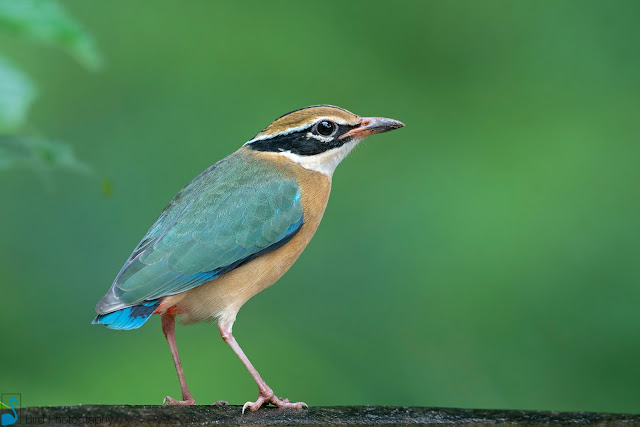Birding in Pilibhit Tiger Reserve, Dudhwa National Park and Shuklaphanta Wildlife Reserve.
Period: 26th Nov 2015 to 2nd Dec 2015
Indo-Nepal region was a classic combination of dense evergreen sal forests, that formed an integral part of the Lower-Himalayan mountains, Pilibhit Tiger Reserve in the foothills, lowland and the plains of the ‘Terai-Duar’ alongside Dudhwa National Park, and the endless tall grasslands of Shuklaphanta Wildlife Reserves in southeastern Nepal.
Being winter we had anticipated a splendid variety of birds, as well as some impressive rare mammals (including Indian Rhinoceros) apart from great scenery.
PILIBHIT TIGER RESERVE:
(Time spent: 2 Nights)
Reserve, had these fine tracks and sal forest, wherein the trees seemed very old and unusually tall...
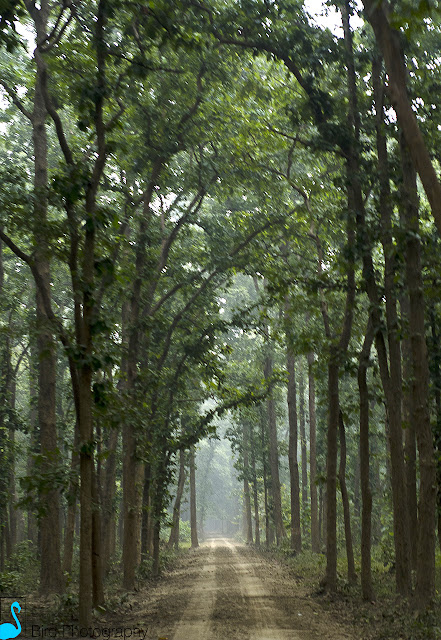 |
| Sal Forest |
While we drove through the tall trees could hear only the sound of the
passing wind and crackling of dried leaves as our gypsy moved.
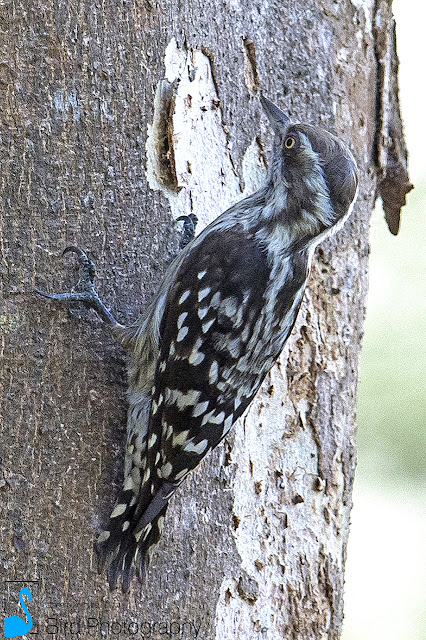 |
| Brown-capped Pygmy Woodpecker |
Generally the stretches were long and hardly had a bend. The woodlands
had dense canopy and could hear the calls of the woodpeckers.
 |
| Himalayan Flameback |
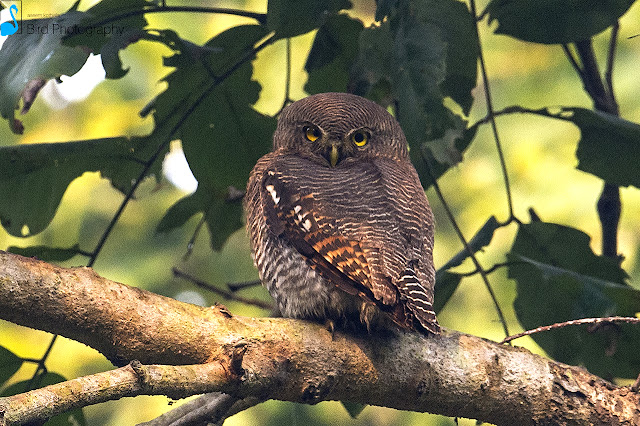 |
| Jungle Owlet |
Obviously, the long drives in the dense forest were to look for the predator,
the tiger. But, all we saw were fresh pug marks.
Tiger sightings seemed difficult and while we were discussing the
probabilities of the sighting them with Akhtar Khan our host and Nawaz Khan over biryani, got a ray of hope.
The wildlife dept. called up and informed Akhtar that a village lad had seen a tigress and climbed up a tree by using a another half fallen tree to save himself.
Unfortunate, for the 17 year boy, the tigress had placed her new born cubs just below the same fallen tree. Obviously, she was stressed and had foiled the forest dept's attempts to rescue the boy. The villagers had gathered with axes and were making lot of noise and trying to scare the tigress, who wasn't ready to budge.
We reached the location along with the rescue team, who by now were sure that the tigress would not leave, as the cubs were too small. In the silence, when the team was discussing, heard the calls of the cubs. Finally, Akhtar and Nawaz took on to the wheels of the forest vehicle which was completely closed and parked the vehicle just below the tree on which the boy had finally jumped on to!
Ocassionly using the siren, the rescue team asked the boy, "Kya tigress dikh rahi hai", (can you see the tigress) , "Yes" he said, "i can even see the cubs"
The team by now managed to convince the boy to climb down a bit till he can just jump on to the rooftop, the door were kept open and he was suppposed to get in, the moment he landed. It was almost 4 hours, since he was stuck. The moment he landed on the rooftop, literally jumped and started to run away from the forest. Seeing this all started to shout and he than ran towards our open vehicle. No sooner he reached us, we asked him, "why did you not get into the parked vehicle", he started to run again towards the other vehicle.
This simply showed that he was so puzzled after being close to dead for such a long time. Finally, he was made to sit in our open vehicle and we drove off slowly from the vicinity. The long day for the lad came to an safe end.
Along the rivers in the region, which had fog during most times of the days, we sighted most of the wagtails in large number along with 4-5 individuals of River Lapwings. The nomadic tribes around the rivers had ensured that the birds were comfortable inspite of the fact that we had moved a bit closer to get a better view.
 |
| White Wagtail |
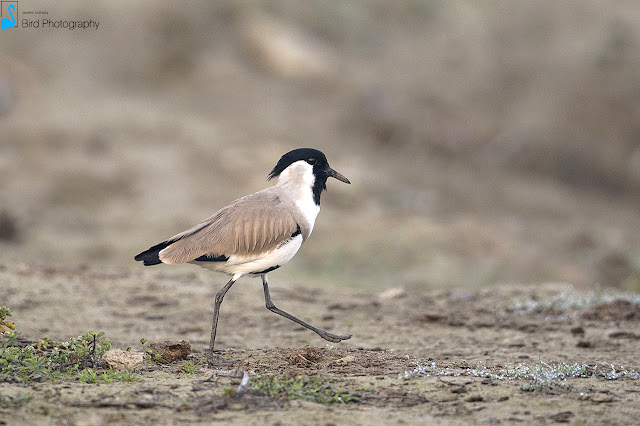 |
| River Lapwing |
The walking trek in the grasslands of Pilibhit were mostly easy, but as the day progressed, the chill had disappeared and lugging the warm clothing's along with the equipment's made it feel like a long walk. By noon feeling exhausted, we decided to return back to the camp.
 |
| Grey-headed Lapwing |
The black francolin's were surprising us by suddenly taking off from the grassland on numerous instances. The calls of the swamp francolin's were also heard very often through the grasslands, though we could not sight them.
 |
| Bluethroat |
Region definitely was one of the best place where we could explore the Terai-Duar grasslands and witness savannah eco-system.
DUDHWA NATIONAL PARK:
(Time spent: 2 Nights)
The forests of the park seemed more dense compared to the one we experienced in Pilibhit. The jeep safaris by the park authorities were conducted on different trails each time, one of the trails ended with an elephant safari. It's when one gets the opportunity to look over the grasslands and catch a glimpse of the might Indian rhinoceros and Swamp deer's. Both these species are catagorised under vulnerable by IUCN.
 |
| Indian rhinoceros |
 |
| Swamp deer |
The grey slaty woodpecker is one the largest and it would move very swiftly from one bark to another, finally disappearing deep into the forest.
As the woodlands would end could see a never ending grassland which
was a safe haven for the birds.
 |
| Way to the Grasslands |
On the outskirts of the park, was a small tributary of River Sharda, which has open grasslands on either sides the magar crocodiles were seen basking and turtles enjoying a swim.
 |
| Mugger crocodile |
 |
| Indian softshell turtle |
Grey headed fish-eagle, lesser whistling ducks, cormorants and darters decorate the barren trees growing within the water body.
 |
| Grey-headed Fish Eagle |
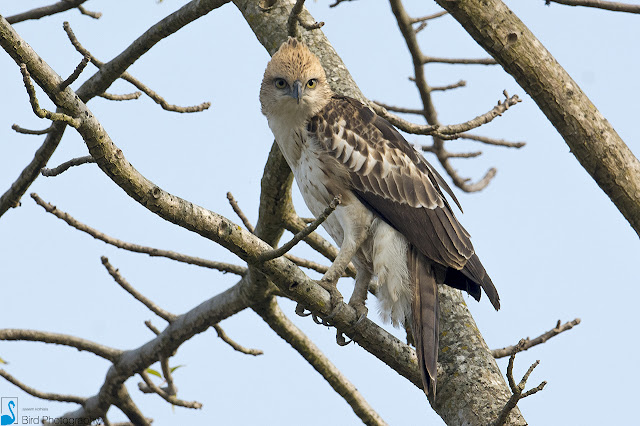 |
| Changeable Hawk Eagle |
EN-ROUTE NEPAL:
(Time taken: 2-3 hours from Pilibhit)
Today we planned to drive into Nepal and this time along, the Sharda Sagar dam on Sharda river. This reservoir which along with the forest areas represented a very beautiful landscape. Being a source for irrigation water to Pilibhit and other
parts of the north of Uttar Pradesh.
The Sharda Sagar is said to be about 25 sq.
km. in size of which the majority lies in Uttar Pradesh and some
part in the northern side is in Uttarakhand.
 |
| Sharda Sagar Reservoir |
"An interesting and must place to visit in winters when
the migratory birds fly here in large numbers" said Akhtar. It was unfortunate, that winters had been delayed and could see only few common coots, common pochard's and very few grebes.
Along the other side of the Dam, amist the grazing cattle, sighted the Common starling and a pair of Northern Lapwing at a distant.
 |
| Northern Lapwing |
Villagers along the dam were living in a very difficult terrain, the dam water had almost seeped into their homes.
 |
| Village |
Just in a field adjacent to the village, sighted a jackal looking for a prey.
 |
| Jackal |
SHUKLAPHANTA WILDLIFE RESERVE:
(Time spent: 2 Night)
We camped in Shuklaphanta Jungle Cottage which is situated in the Buffer zone of the Shuklaphanta Wildlife Reserve, just 6 km from Mahendranagar and around 14-16 kms from the Indian border.
Our complete day safari was arranged in this extreme south-western section of Nepal Terai in Kanchanpur District. The
reserve shares a common boundary with the Indian state of Uttar Pradesh
in the south and west which is formed by the Mahakali (Sarda) River.
Almost for the initial two hours the fog and mist seemed to be weaved
together. Most of the tracks looked very picturesque. While we were on a
machan near Rani tal, enjoying the chill, heard a call.
 |
| Rani tal |
|
Which we realised a little later, that it could be a warning call, as we saw very fresh pug marks. There was spray on it as well. Definitely, the predator had heard us come and had disappeared into the forests. Due, to very less human movement, the wildlife here seemed very shy.
 |
| Pug marks |
This protected area in the Terai Region of Nepal, had fine and
wide open grasslands, predominantly sal forest, riverbeds and tropical
wetlands.
 |
| Striated Babbler |
 |
| White-capped Bunting |
 |
| Lesser Coucal |
During the safari, we felt very safe as the Nepal Army has been providing security to the reserve.
The congregation of swamp deer in the reserve’s grasslands is definitely
the largest in the world, the population is said to be of international
significance. However, the very tall grass did not allow us to drive towards the swamps where the herd was possibly inhabiting.
On the return (3rd December 2015), we spent a couple of hours in Okhla Bird Sanctuary and Surajpur Bird Sanctuary. The concerned forest officer were very co-operative and requested if we could come on the following day, to attend the BIRD FAIR that was scheduled across Uttar Pradesh on 4th of December 2015
THE TEAM:
 |
| Myself, Ashok Gaikwad, Gopinath Kollur and Satish Thayapurath |
We could have surely sighted more birds and mammals provided we had
at-least 3 more days in the region, as most of our time in the day went in
travel from one location to the other.
Thanking the team of Turquoise Wildlife Conservation Society (TWCS) - Akhtar Khan and Nawaz Khan who co-ordinated all our bookings for safari and stay.
Happy Birding!





 OUR SIGHTINGS: (Id's updated / Corrected and tabulated into region-wise in Jan2016)
OUR SIGHTINGS: (Id's updated / Corrected and tabulated into region-wise in Jan2016)
Avians:
ANSERIFORMES: Anatidae
| 1 Lesser Whistling Duck |
(Dendrocygna javanica) |
Pilibhit Region |
| 2 Greylag Goose |
(Anser anser) |
Pilibhit Region |
| 3 Ruddy Shelduck |
(Tadorna ferruginea) |
Pilibhit Region |
| 4 Common Pochard |
(Aythya ferina) |
Pilibhit Region |
| 5 Ferruginous Duck |
(Aythya nyroca) |
Pilibhit Region |
| 6 Northern Shoveler |
(Spatula clypeata) |
Surajpur Wetlands |
| 7 Indian Spot-billed Duck |
(Anas poecilorhyncha) |
Surajpur Wetlands |
| 8 Northern Pintail |
(Anas acuta) |
Surajpur Wetlands |
| 9 Common Teal |
(Anas crecca) |
Surajpur Wetlands |
GALLIFORMES: Phasianidae
| 10 Indian Peafowl |
(Pavo cristatus) |
Pilibhit Region |
| 11 Common Quail |
(Coturnix coturnix) |
Sukhlaphanta - Nepal |
| 12 Black Francolin |
(Francolinus francolinus) |
Pilibhit Region |
| 13 Grey Francolin |
(Francolinus pondicerianus) |
Pilibhit Region / Dudhwa |
| 14 Red Junglefowl |
(Gallus gallus) |
Dudhwa National Park |
| 15 Red Spurfowl |
(Galloperdix spadicea) |
Dudhwa National Park |
PHOENICOPTERIFORMES: Podicipedidae
| 16 Little Grebe |
(Tachybaptus ruficollis) |
Pilibhit Region |
| 17 Great Crested Grebe |
(Podiceps cristatus) |
Pilibhit Region |
COLUMBIFORMES: Columbidae
| 18 Rock Dove |
(Columba livia) |
Commonly seen |
| 19 Oriental Turtle Dove |
(Streptopelia orientalis) |
Pilibhit Region |
| 20 Eurasian Collared Dove |
(Streptopelia decaocto) |
Pilibhit Region |
| 21 Spotted-necked Dove |
(Streptopelia chinensis) |
Pilibhit Region |
| 22 Emerald Dove |
(Chalcophaps indica) |
Shuklaphanta - Nepal |
CUCULIFORMES: Cuculidae
GRUIFORMES: Rallidae
| 26 White-breasted Waterhen |
(Amaurornis phoenicurus) |
Pilibhit Region |
| 27 Purple Swamphen |
(Porphyrio porphyrio) |
Pilibhit Region |
| 28 Common Moorhen |
(Gallinula chloropus) |
Shuklaphanta - Nepal |
| 29 Common Coot |
(Fulica atra) |
Pilibhit Region |
GRUIFORMES: Gruidae
| 30 Sarus Crane |
(Antigone antigone) |
Palia Kalan, Dudhwa |
PELECANIFORMES: Ciconiidae
| 31 Asian Openbill |
(Anastomus oscitans) |
Palia Kalan, Dudhwa |
| 32 Woolly-necked Stork |
(Ciconia episcopus) |
Pilibhit Region |
| 33 Black-necked Stork |
(Ephippiorhynchus asiaticus) |
Surajpur Wetlands |
PELECANIFORMES: Ardeidae
| 34 Striated Heron |
(Butorides striata) |
Dudhwa National Park |
| 35 Indian Pond Heron |
(Ardeola grayii) |
Commonly Seen |
| 36 Cattle Egret |
(Bubulcus ibis) |
Commonly Seen |
| 37 Grey Heron |
(Ardea cinerea) |
Pilibhit Region / Dudhwa |
| 38 Purple Heron |
(Ardea purpurea) |
Commonly seen |
| 39 Little Egret |
(Egretta garzetta) |
Commonly seen |
PELECANIFORMES: Threskiornithidae
| 40 Black-headed Ibis |
(Threskiornis melanocephalus) |
Surajpur Wetlands |
| 41 Eurasian Spoonbill |
(Platalea leucorodia) |
Surajpur Wetlands |
| 42 Indian Black Ibis |
(Pseudibis papillosa) |
Pilibhit Region |
| 43 Glossy Ibis |
(Plegadis falcinellus) |
Pilibhit Region |
PELECANIFORMES: Phalacrocoracidae
| 44 Little Cormorant |
(Microcarbo niger) |
Pilibhit Region |
| 45 Great Cormorant |
(Phalacrocorax carbo) |
Dudhwa National Park |
PELECANIFORMES: Anhingidae
| 46 Oriental Darter |
(Anhinga melanogaster) |
Dudhwa National Park |
CHARADRIIFORMES: Recurvirostridae
CHARADRIIFORMES: Charadriidae
CHARADRIIFORMES: Jacanidae
| 54 Bronze-winged Jacana |
(Metopidius indicus) |
Pilibhit Region |
CHARADRIIFORMES: Scolopacidae
| 55 Black-tailed Godwit |
(Limosa limosa) |
Surajpur Wetlands |
| 56 Curlew Sandpiper |
(Calidris ferruginea) |
Surajpur Wetlands |
| 57 Little Stint |
(Calidris minuta) |
Surajpur Wetlands |
| 58 Common Snipe |
(Gallinago gallinago) |
Surajpur Wetlands |
| 59 Common Sandpiper |
(Actitis hypoleucos) |
Surajpur Wetlands / Pilibhit Region |
| 60 Green Sandpiper |
(Tringa ochropus) |
Surajpur Wetlands |
| 61 Common Greenshank |
(Tringa nebularia) |
Surajpur Wetlands |
| 62 Common Redshank |
(Tringa totanus) |
Surajpur Wetlands |
CHARADRIIFORMES: Laridae
| 63 Brown-headed Gull |
(Chroicocephalus brunnicephalus) |
Pilibhit Region |
ACCIPITRIFORMES: Accipitridae
STRIGIFORMES: Strigidae
BUCEROTIFORMES: Bucerotidae
| 73 Oriental Pied Hornbill |
(Anthracoceros albirostris) |
Dudhwa National Park |
| 74 Indian Grey Hornbill |
(Ocyceros birostris) |
Dudhwa National Park |
BUCEROTIFORMES: Upupidae
| 75 Common Hoopoe |
(Upupa epops) |
Pilibhit Region |
PICIFORMES: Picidae
PICIFORMES: Ramphastidae
| 83 Great Barbet |
(Psilopogon virens) |
Shuklaphanta - Nepal |
CORACIIFORMES: Meropidae
| 84 Green Bee-eater |
(Merops orientalis) |
Pilibhit Region |
CORACIIFORMES: Coraciidae
| 85 Indian Roller |
(Coracias benghalensis) |
Pilibhit Region |
CORACIIFORMES: Alcedinidae
| 86 Common Kingfisher |
(Alcedo atthis) |
Dudhwa National Park |
| 87 Pied Kingfisher |
(Ceryle rudis) |
Pilibhit Region |
| 88 Stork-billed Kingfisher |
(Pelargopsis capensis) |
Dudhwa National Park |
| 89 White-throated Kingfisher |
(Halcyon smyrnensis) |
Commonly Seen |
PSITTACIFORMES: Psittaculidae
| 90 Alexandrine Parakeet |
(Psittacula eupatria) |
Pilibhit Region |
| 91 Rose-ringed Parakeet |
(Psittacula krameri) |
Dudhwa National Park |
| 92 Plum-headed Parakeet |
(Psittacula cyanocephala) |
Pilibhit Region |
PASSERIFORMES: Campephagidae
| 93 Scarlet Minivet |
(Pericrocotus flammeus) |
Pilibhit Region |
| 94 Large Cuckooshrike |
(Coracina javensis) |
Dudhwa - India / Shuklaphanta - Nepal |
PASSERIFORMES: Oriolidae
| 95 Black-hooded Oriole |
(Oriolus xanthornus) |
Dudhwa National Park |
PASSERIFORMES: Aegithinidae
| 96 Common Iora |
(Aegithina tiphia) |
Dudhwa National Park |
PASSERIFORMES: Dicruridae
| 97 Black Drongo |
(Dicrurus macrocercus) |
Dudhwa National Park |
| 98 Lesser Racket-tailed Drongo |
(Dicrurus remifer) |
Dudhwa National Park |
| 99 Greater Racket-tailed Drongo |
(Dicrurus paradiseus) |
Pilibhit Region / Dudhwa National Park |
PASSERIFORMES: Laniidae
PASSERIFORMES: Corvidae
| 101 Rufous Treepie |
(Dendrocitta vagabunda) |
Pilibhit Region / Dudhwa |
| 102 House Crow |
(Corvus splendens) |
Dudhwa |
| 103 Large-billed Crow |
(Corvus macrorhynchos) |
Dudhwa |
PASSERIFORMES: Nectariniidae
| 104 Purple Sunbird |
(Cinnyris asiaticus) |
Pilibhit Region |
PASSERIFORMES: Ploceidae
| 105 Baya Weaver |
(Ploceus philippinus) |
Pilibhit Region |
PASSERIFORMES: Estrildidae
| 106 Red Avadavat |
(Amandava amandava) |
Pilibhit Region |
| 108 Indian Silverbill |
(Euodice malabarica) |
Pilibhit Region |
| 109 Scaly-breasted Munia |
(Lonchura punctulata) |
Pilibhit Region / Dudhwa |
PASSERIFORMES: Passeridae
| 108 House Sparrow |
(Passer domesticus) |
Pilibhit Region |
PASSERIFORMES: Motacillidae
| 109 Forest Wagtail |
(Dendronanthus indicus) |
Dudhwa National Park |
| 110 Paddyfield Pipit |
(Anthus rufulus) |
Pilibhit Region |
| 111 Yellow Wagtail |
(Motacilla flava) |
Pilibhit Region / Dudhwa |
| 112 Grey Wagtail |
(Motacilla cinerea) |
Pilibhit Region / Dudhwa |
| 113 Citrine Wagtail |
(Motacilla citreola) |
Pilibhit Region |
| 114 White-browed Wagtail |
(Motacilla maderaspatensis) |
Pilibhit Region |
| 115 White Wagtail |
(Motacilla alba) |
Pilibhit Region / Dudhwa |
PASSERIFORMES: Emberizidae
| 116 White-capped Bunting |
(Emberiza stewarti) |
Shuklaphanta - Nepal |
PASSERIFORMES: Stenostiridae
| 117 Grey-headed Canary-flycatcher |
(Culicicapa ceylonensis) |
Shuklaphanta - Nepal |
PASSERIFORMES: Paridae
| 118 Great tit |
(Parus major) |
Pilibhit Region - India / Shuklaphanta - Nepal |
| 119 Green-backed Tit |
(Parus monticolus) |
Pilibhit Region |
PASSERIFORMES: Cisticolidae
| 120 Zitting Cisticola |
(Cisticola juncidis) |
Pilibhit Region |
| 121 Yellow-bellied Prinia |
(Prinia flaviventris) |
Dudhwa National Park |
| 122 Ashy Prinia |
(Prinia socialis) |
Pilibhit Region |
| 123 Plain Prinia |
(Prinia inornata) |
Pilibhit Region |
| 124 Common Tailorbird |
(Orthotomus sutorius) |
Pilibhit Region |
PASSERIFORMES: Acrocephalidae
| 125 Blyth's Reed Warbler |
(Acrocephalus dumetorum) |
Pilibhit Region |
PASSERIFORMES: Hirundinidae
| 126 Wire-tailed Swallow |
(Hirundo smithii) |
Pilibhit Region |
| 127 Barn Swallow |
(Hirundo rustica) |
Pilibhit Region |
| 128 Dusky Crag Martin |
(Ptyonoprogne concolor) |
Pilibhit Region |
PASSERIFORMES: Pycnonotidae
| 129 Red-whiskered Bulbul |
(Pycnonotus jocosus) |
Pilibhit Region |
| 130 White-eared Bulbul |
(Pycnonotus leucotis) |
Pilibhit Region |
| 131 Red-vented Bulbul |
(Pycnonotus cafer) |
Pilibhit Region |
PASSERIFORMES: Phylloscopidae
| 132 Plain Leaf Warbler |
(Phylloscopus neglectus) |
Pilibhit Region |
PASSERIFORMES: Leiothrichidae
PASSERIFORMES: Sturnidae
| 135 Common Starling |
(Sturnus vulgaris) |
Pilibhit Region |
| 136 Asian Pied Starling |
(Gracupica contra) |
Pilibhit Region |
| 137 Common Myna |
(Acridotheres tristis) |
Pilibhit Region / Shuklaphanta - Nepal |
| 138 Bank Myna |
(Acridotheres ginginianus) |
Pilibhit Region |
PASSERIFORMES: Muscicapidae
| 139 Indian Robin |
(Saxicoloides fulicatus) |
Pilibhit Region / Dudhwa |
| 140 Oriental Magpie Robin |
(Copsychus saularis) |
Pilibhit Region |
| 141 Asian Verditer Flycatcher |
(Eumyias thalassinus) |
Pilibhit Region |
|
|
|
| 142 Bluethroat |
(Luscinia svecica) |
Pilibhit Region / Shuklaphanta - Nepal |
| 143 Black Redstart |
(Phoenicurus ochruros) |
Shuklaphanta - Nepal |
| 144 Eastern Stonechat |
(Saxicola maurus) |
Commonly seen |
| 145 Pied Bush Chat |
(Saxicola caprata) |
Pilibhit Region |
| 146 Grey Bush Chat |
(Saxicola ferreus) |
Pilibhit Region / Dudhwa |
| 147 Brown Rock Chat |
(Oenanthe fusca) |
Pilibhit Region |
Mammals and Reptiles:
| 1 Indian rhinoceros |
(Rhinoceros unicornis) |
Dudhwa National Park |
| 2 Swamp Deer |
(Rucervus duvaucelii) |
Dudhwa National Park |
| 3 Indian jackal |
(Canis aureus) |
Sharda Sagar, Pilibhit Region |
| 4 Wild boar |
(Sus scrofa) |
Dudhwa / Pilibhit Region |
| 5 Cheetal |
(Axis axis) |
Commonly seen |
| 6 Rhesus macaque |
(Macaca mulatta) |
Dudhwa / Pilibhit Region |
| 7 Mugger crocodile |
(Crocodylus palustris) |
Outskirts of Dudhwa NP |
| 8 Indian softshell turtle |
(Nilssonia gangetica) |
Outskirts of Dudhwa NP |































